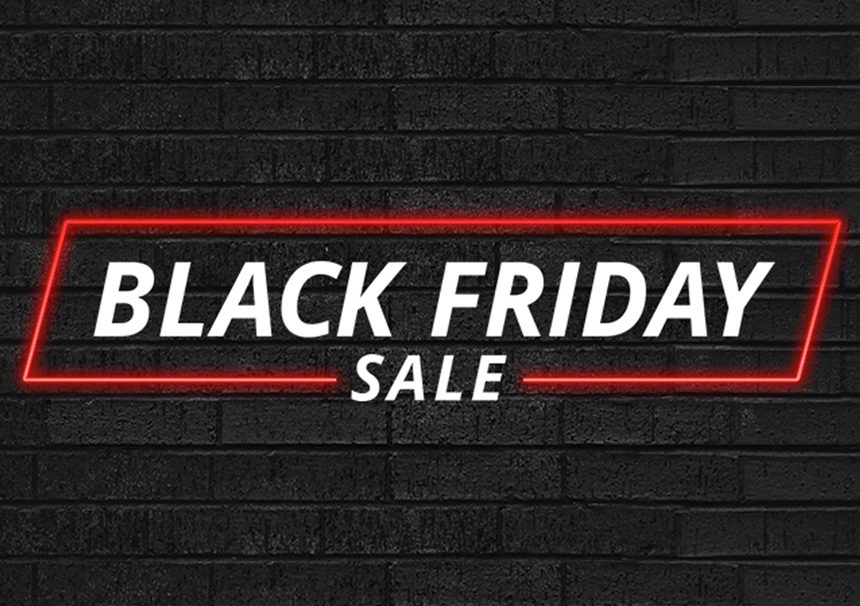The winter holiday season, that event-rich stretch encompassing Thanksgiving, Christmas, and New Year’s Eve, is almost upon us. Confused gift-givers may accurse it, but it’s certainly beloved by retailers throughout the world: after all, it gets even the most closely-guarded wallets (be they physical or digital) creaking wide open — ostensibly in the name of generosity.
In fact, the consumer frenzy in the midst of this period is such that it essentially spawned a tacked-on commercial holiday in the form of Black Friday (which itself birthed Cyber Monday, and then the BFCM weekend). Will all these events one day collapse into a shopping singularity that automatically empties all PayPal accounts in existence? I hope not, but we’ll see.
If you’re a retailer, anyway, the opportunities are impossible to miss. During the winter months, you should be maxing-out your store’s performance, hitting year-topping sales figures. But what if you’re not sure how to take advantage? Worse still, what if you can only look back with regret at the underwhelming winters of the past, fearful that you’ll fail again? Well, don’t be so negative.
Whether you’re heading into your first holiday season as a retailer, or you’re trying to make up for old mistakes, the coming months can be very lucrative for you — even though you’ve left it fairly late to take action.
In this piece, we’re going to set out some key tips for boosting seasonal sales quickly, setting you up to turn things around. Let’s get to it:
Give Your Store a Suitable Theme
Sounds trivial, doesn’t it? The color scheme of your website, the imagery, the shapes… surely these things can’t have much of an effect on your conversion rate. And yes, that’s probably true — but even a small effect can be worth it. Consider how much of winter retail is about hype: one second you view something as too expensive, not worth getting, but then that magical phrase “It’s for Christmas!” pops into your mind, and all your rational faculties fail you.
 Now imagine landing on a store with a punchy festive aesthetic, reds and greens everywhere, and a snowfall gently cascading down your screen. Goofy, sure. Obvious, most certainly. But what’s wrong with that? The more you can drag a shopper’s mind back to their childhood (that time when Christmas seemed like a life-changing wonder), the more you can tempt them.
Now imagine landing on a store with a punchy festive aesthetic, reds and greens everywhere, and a snowfall gently cascading down your screen. Goofy, sure. Obvious, most certainly. But what’s wrong with that? The more you can drag a shopper’s mind back to their childhood (that time when Christmas seemed like a life-changing wonder), the more you can tempt them.
Assuming you’re running your store on WordPress with something like WooCommerce (seems reasonable given the context of this site), then you can find plenty of free or cheap plugins to sprinkle some Xmas cheer throughout: you can start by checking out this list. And don’t worry too much about what might happen if a plugin installation goes awry and your Dancing Neon Santa ends up taking down your site because you can (and should) always have a backup.
Rewrite Your Copy to Suit the Season
As with the aesthetic, it’s nice when people get into the spirit of things. Just imagine someone dorning a pirate costume for Halloween but flatly refusing to adopt the accent of a salty sea-dog. Wouldn’t that be tremendously disappointing, damaging the entire look? And while store copy doesn’t have the immediate impact of hero images and themes, it does make a huge difference.
Firstly, you should change the copy of your homepage to reflect the importance of the season. The very first thing each visitor reads should be about just that: “Christmas is on the way! Get your loved ones some amazing gifts!” and “Black Friday is almost here! Don’t miss the incredible savings!” are along the right lines (though you can be far more creative).
Secondly, you should update your product descriptions to emphasize their seasonal suitability. Those magic words — “Makes a perfect Christmas gift” — have racked up plenty of sales throughout the years, and they’re no less powerful now. You should also focus on shipping turnaround times because that’s a key factor. The absence of something like “Guaranteed delivery before Christmas” can push people to go elsewhere.
Jump On Relevant Product Trends
You don’t need to take down all the product listings that don’t seem particularly useful for the seasonal sales, because they’re not going to hurt — but you should think about adding some fresh products to the mix, and there are two main reasons for this:
- Each year brings new fads and crazes, and certain high-price items can dominate organic search for weeks or even months. Think of Turbo-Man from Jingle All The Way, or real products like hoverboards in recent years. It doesn’t really matter if you can’t do anything special pricing-wise, because the aim is to compete in the SERPs to get people to your store and (hopefully) win them over with the rest of your range.
- Ubiquitous low-cost items are perfect basket additions, making them great for cross-selling. I’m mainly talking about the products that only pop up around seasonal holidays: packs of tinsel, fairy lights, spooky masks, novelty end-of-the-year glasses, etc. You won’t draw people in with them, but if you offer them at the checkout stage, you’ll most likely pick up some easy money alongside your main sales.
 Because so many products these days are readily available through third-party suppliers (and can even be sold through dropshipping, requiring no practical change to your setup), there’s little reason not to make some stock alterations.
Because so many products these days are readily available through third-party suppliers (and can even be sold through dropshipping, requiring no practical change to your setup), there’s little reason not to make some stock alterations.
Improve Your Checkout Process
I mentioned the checkout stage, and it’s particularly important for CRO. It’s easy to get carried away with seasonal buzz and get all the way to the checkout with a basket full of frivolous items, only to catch yourself at the last second and conclude that you really don’t need that USB-powered Christmas tree ornament.
 As a retailer, that scenario is incredibly frustrating. So close, yet so far, with all of the effort needed to get the shopper to that point ending up wasted. By making your checkout as smooth and easy as possible, you can minimize the time required to navigate it, giving your prospective customers fewer opportunities to second-guess their decisions.
As a retailer, that scenario is incredibly frustrating. So close, yet so far, with all of the effort needed to get the shopper to that point ending up wasted. By making your checkout as smooth and easy as possible, you can minimize the time required to navigate it, giving your prospective customers fewer opportunities to second-guess their decisions.
A fantastic checkout does various things: allow a guest login, support simple payment options, require minimal data entry, provide reassurances regarding merchant trustworthiness, clearly detail cost and shipping, and work just as well on a smartphone as on a desktop computer. If that description doesn’t sound like your checkout, then it’s time to work on it — and while it sounds like a lot, it won’t take much time to make one or two improvements.
From now until the end of 2019, the retail world will be in overdrive, eager to hoover up as much money as it possibly can — and there’s no reason why you can’t be part of that money-making expedition. You just need to do everything you can to take advantage of the seasonal activity, and these tips will help you manage it.

